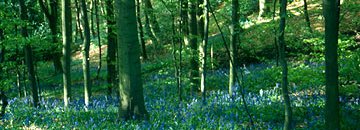Contact Us
- 1 Parklands Hamsterley Mill Rowlands Gill NE39 1HH
- Tel/Fax: +44 (0) 191 384 2556
- Mobile: 07967 818 719
Useful Links
- Please Click Here to view our useful links
Latest News
Chester le Street Golf
Before and after ...Read more
Woodland Design & Management
Woodland
Practical & Sustainable Management
Woodland Management: Our Philosophy
Woodlands need to be managed to ensure their sustainability and productivity for future generations. With a practical application of economics, ecology and sound silvicultural principles, this can be achieved. Management plans must take into account the owners' objectives, whether they are commercial, sporting or recreational.
However there should be no conflict between sound commercial management and good ecological practice, as both objectives can be achieved simultaneously.
A management plan should be designed to suit the aims and objectives of each individual woodland and should minimise costs whilst maximising grants. This may involve thinning, felling or restocking. Restocking can take the form of direct planting or natural regeneration, whichever is appropriate to the specific site.

Good, sound practice will produce viable, high conservation woodland, which will benefit not only the owner but the whole environment.
Creation of New Woodlands
Our design plans always take into account the objectives of the owner, the effect on the broader landscape and good silvicultural practice. Factors such as species selection, soil type, climate, hydrology and exposure are all taken into account in order to achieve successful woodland establishment.
Woodland Design & Management on the Golf Course
Trees and woodlands are an integral part of many inland golf courses, often forming a framework for the golfing landscape. However, woodlands are usually the forgotten component within the club's management policy. This is understandable as the manicuring of the course is quite rightly the first concern of both members and staff.
There is a tendency to assume that woodlands remain in perpetuity if left to their own devices. However, this is not the case, as most neglected woodlands will revert to scrub or suffer windblow.
The gales which swept Britain in 1987 brought home the message of how fragile a woodland can be when not managed; yet, even now, many clubs still have no management policy for their woodlands. By managing woodland in a sustainable manner, we can ensure that a young generation of trees is produced to replace those in senescence. On a golf course where the objectives are aesthetic and conservation based, a wider range of age classes within the woodland is necessary.
This can be achieved via continuous cover management, which has the advantage of providing landscape continuity and maintaining wildlife habitats.
Well-managed woodland will not only benefit the members of today but will leave a pleasing legacy for future generations.











